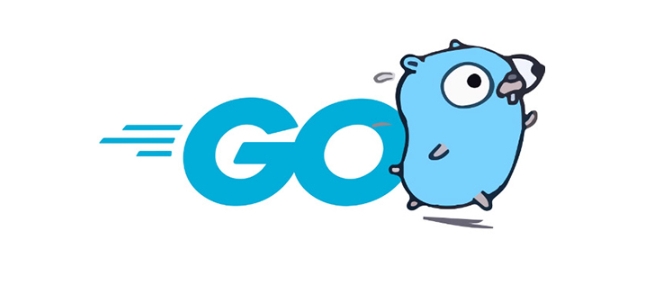The core steps to build Go's CI/CD pipeline include: 1. Ensure the project structure standards, including main.go, unit testing and cleaning dependencies; 2. Write a GitHub Actions workflow file definition process, covering code pulling, Go environment setting and running tests; 3. Add build logic such as go build or Docker image packaging; 4. Configure deployment methods such as SSH upload and restart services; 5. Set Secrets to store sensitive information and reference it in workflow; 6. Ensure the server permissions and environment configuration are correct. Each link needs to be opened one by one to achieve automation.

It is actually not difficult to use GitHub Actions to build a Go CI/CD pipeline. The key is to understand several core steps: testing, building, and deployment. As long as these links are opened up, the rest will be the problem of automated execution.

Get your Go project structure ready
Before you begin, make sure that your Go project structure is standard so that subsequent processes are easier to automate. Usually includes:
-
main.gois in the root directory or/cmd - The unit test is written and can be run through
go test ./... - You can use
go mod tidyto clean up dependencies - If you want to deploy it as a service, you have Dockerfile or systemd configuration
These are not mandatory requirements, but can greatly simplify the subsequent CI/CD configuration process.

Write the workflow file for GitHub Actions
The workflow of GitHub Actions is defined in a .yml file and placed in .github/workflows/ directory. For example, it is called ci-cd.yml .
The basic structure is as follows:

name: CI/CD Pipeline
on:
push:
branches:
- main
jobs:
build-and-test:
runs-on: ubuntu-latest
Steps:
- name: Checkout code
uses: actions/checkout@v3
- name: Set up Go
uses: actions/setup-go@v4
with:
go-version: '1.21'
- name: Run tests
run: |
go mod tidy
go test ./...This is the most basic CI part, ensuring that every time you submit the code, you can run through the test.
Add to build and deploy logic
If your project needs to be packaged into binary or Docker images, you can add a few steps based on the above.
For example, building a binary file:
- name: Build binary
run: go build -o myapp cmd/main.goIf you are deploying to the server, you can use SSH or rsync to pass the files, or you can use the deployment plug-in provided by GitHub Actions.
To give a simple example, upload and restart the service using SSH:
- name: Deploy via SSH
uses: appleboy/ssh-action@master
with:
host: ${{ secrets.HOST }}
username: ${{ secrets.USERNAME }}
password: ${{ secrets.PASSWORD }}
script: |
cd /path/to/app
cp ~/myapp.
systemctl restart myappOf course, you can also change to a more secure way, such as using private key authentication, Docker Compose, Kubernetes, etc., which is just a most direct way to do it.
Don't forget to set Secrets and permissions
Some sensitive information that needs to be used in GitHub Actions, such as server account password, SSH private key, API Token, etc., should be placed in the project's Secrets .
The operation path is: enter your GitHub repository → Settings → Secrets and variables → Actions → New repository secret
Then reference it in the workflow file via ${{ secrets.YOUR_SECRET_NAME }} .
In addition, if the deployment target is a server, remember to make sure that the server allows SSH login, have sufficient permissions to run the service, etc.
Basically that's it. CI/CD is not complicated, but details are easy to ignore, such as environment variables not paired, permissions are incorrect, scripts not written in full, etc. Just take it step by step, it is very easy to use GitHub Actions for automatic construction and deployment of Go projects.
The above is the detailed content of Go CI/CD pipeline with GitHub Actions. For more information, please follow other related articles on the PHP Chinese website!

Hot AI Tools

Undress AI Tool
Undress images for free

Undresser.AI Undress
AI-powered app for creating realistic nude photos

AI Clothes Remover
Online AI tool for removing clothes from photos.

Clothoff.io
AI clothes remover

Video Face Swap
Swap faces in any video effortlessly with our completely free AI face swap tool!

Hot Article

Hot Tools

Notepad++7.3.1
Easy-to-use and free code editor

SublimeText3 Chinese version
Chinese version, very easy to use

Zend Studio 13.0.1
Powerful PHP integrated development environment

Dreamweaver CS6
Visual web development tools

SublimeText3 Mac version
God-level code editing software (SublimeText3)

Hot Topics
 How can you handle JSON encoding and decoding effectively in Go?
Jun 11, 2025 am 12:02 AM
How can you handle JSON encoding and decoding effectively in Go?
Jun 11, 2025 am 12:02 AM
Effective handling of JSON in Go requires attention to structural labels, optional fields and dynamic analysis. Use the struct tag to customize the JSON key name, such as json:"name"; make sure the fields are exported for access by the json package. Use pointers or omitempty tags when processing optional fields to distinguish between unprovided values ??from explicit zeros. When parsing unknown JSON, map[string]interface{} can be used to extract data with type assertions. The default number will be parsed as float64. json.MarshalIndent can be used to beautify the output during debugging, but the production environment should avoid unnecessary formatting. Mastering these techniques can improve the robustness and ability of your code
 How can Go programs interact with C code using Cgo? What are the trade-offs?
Jun 10, 2025 am 12:14 AM
How can Go programs interact with C code using Cgo? What are the trade-offs?
Jun 10, 2025 am 12:14 AM
Go programs can indeed interact with C code through Cgo, which allows Go to call C functions directly. When using Cgo, just import the pseudo-package "C" and embed C code in the comments above the import line, such as including C function definitions and calling them. In addition, external C library can be linked by specifying link flags such as #cgoLDFLAGS. However, there are many issues to pay attention to when using Cgo: 1. Memory management needs to be processed manually and cannot rely on Go garbage collection; 2. Go types may not match C types, and types such as C.int should be used to ensure consistency; 3. Multiple goroutine calls to non-thread-safe C libraries may cause concurrency problems; 4. There is performance overhead for calling C code, and the number of calls across language boundaries should be reduced. Cgo's lack
 How can Go applications be cross-compiled for different operating systems and architectures?
Jun 11, 2025 am 12:12 AM
How can Go applications be cross-compiled for different operating systems and architectures?
Jun 11, 2025 am 12:12 AM
Yes,Goapplicationscanbecross-compiledfordifferentoperatingsystemsandarchitectures.Todothis,firstsettheGOOSandGOARCHenvironmentvariablestospecifythetargetOSandarchitecture,suchasGOOS=linuxGOARCH=amd64foraLinuxbinaryorGOOS=windowsGOARCH=arm64foraWindow
 How does Go handle pointers, and how do they differ from pointers in C/C ?
Jun 10, 2025 am 12:13 AM
How does Go handle pointers, and how do they differ from pointers in C/C ?
Jun 10, 2025 am 12:13 AM
Go simplifies the use of pointers and improves security. 1. It does not support pointer arithmetic to prevent memory errors; 2. Automatic garbage collection and management of memory without manual allocation or release; 3. The structure method can seamlessly use values ??or pointers, and the syntax is more concise; 4. Default safe pointers to reduce the risk of hanging pointers and memory leakage. These designs make Go easier to use and safer than C/C, but sacrifice some of the underlying control capabilities.
 What are the implications of Go's static linking by default?
Jun 19, 2025 am 01:08 AM
What are the implications of Go's static linking by default?
Jun 19, 2025 am 01:08 AM
Go compiles the program into a standalone binary by default, the main reason is static linking. 1. Simpler deployment: no additional installation of dependency libraries, can be run directly across Linux distributions; 2. Larger binary size: Including all dependencies causes file size to increase, but can be optimized through building flags or compression tools; 3. Higher predictability and security: avoid risks brought about by changes in external library versions and enhance stability; 4. Limited operation flexibility: cannot hot update of shared libraries, and recompile and deployment are required to fix dependency vulnerabilities. These features make Go suitable for CLI tools, microservices and other scenarios, but trade-offs are needed in environments where storage is restricted or relies on centralized management.
 How do I create a buffered channel in Go? (e.g., make(chan int, 10))
Jun 20, 2025 am 01:07 AM
How do I create a buffered channel in Go? (e.g., make(chan int, 10))
Jun 20, 2025 am 01:07 AM
To create a buffer channel in Go, just specify the capacity parameters in the make function. The buffer channel allows the sending operation to temporarily store data when there is no receiver, as long as the specified capacity is not exceeded. For example, ch:=make(chanint,10) creates a buffer channel that can store up to 10 integer values; unlike unbuffered channels, data will not be blocked immediately when sending, but the data will be temporarily stored in the buffer until it is taken away by the receiver; when using it, please note: 1. The capacity setting should be reasonable to avoid memory waste or frequent blocking; 2. The buffer needs to prevent memory problems from being accumulated indefinitely in the buffer; 3. The signal can be passed by the chanstruct{} type to save resources; common scenarios include controlling the number of concurrency, producer-consumer models and differentiation
 How can you use Go for system programming tasks?
Jun 19, 2025 am 01:10 AM
How can you use Go for system programming tasks?
Jun 19, 2025 am 01:10 AM
Go is ideal for system programming because it combines the performance of compiled languages ??such as C with the ease of use and security of modern languages. 1. In terms of file and directory operations, Go's os package supports creation, deletion, renaming and checking whether files and directories exist. Use os.ReadFile to read the entire file in one line of code, which is suitable for writing backup scripts or log processing tools; 2. In terms of process management, the exec.Command function of the os/exec package can execute external commands, capture output, set environment variables, redirect input and output flows, and control process life cycles, which are suitable for automation tools and deployment scripts; 3. In terms of network and concurrency, the net package supports TCP/UDP programming, DNS query and original sets.
 How does Go ensure memory safety without manual memory management like in C?
Jun 19, 2025 am 01:11 AM
How does Go ensure memory safety without manual memory management like in C?
Jun 19, 2025 am 01:11 AM
Goensuresmemorysafetywithoutmanualmanagementthroughautomaticgarbagecollection,nopointerarithmetic,safeconcurrency,andruntimechecks.First,Go’sgarbagecollectorautomaticallyreclaimsunusedmemory,preventingleaksanddanglingpointers.Second,itdisallowspointe






